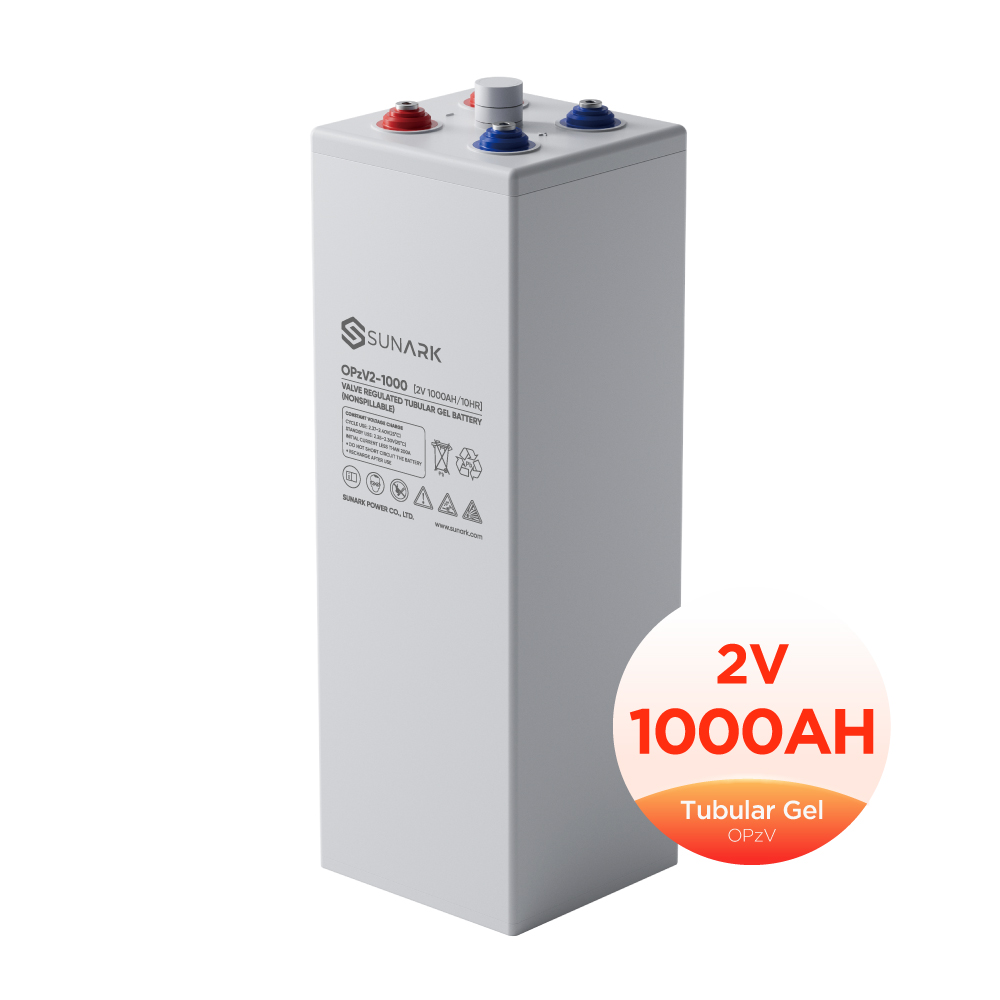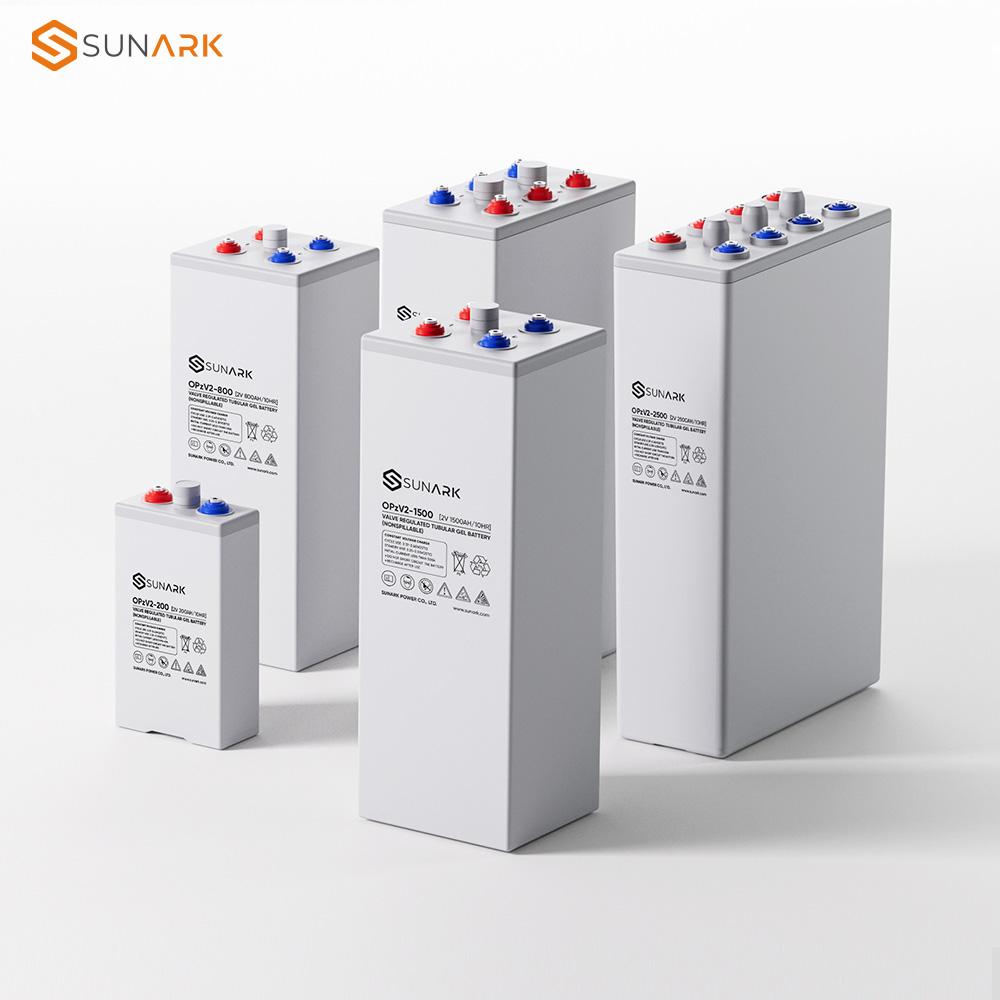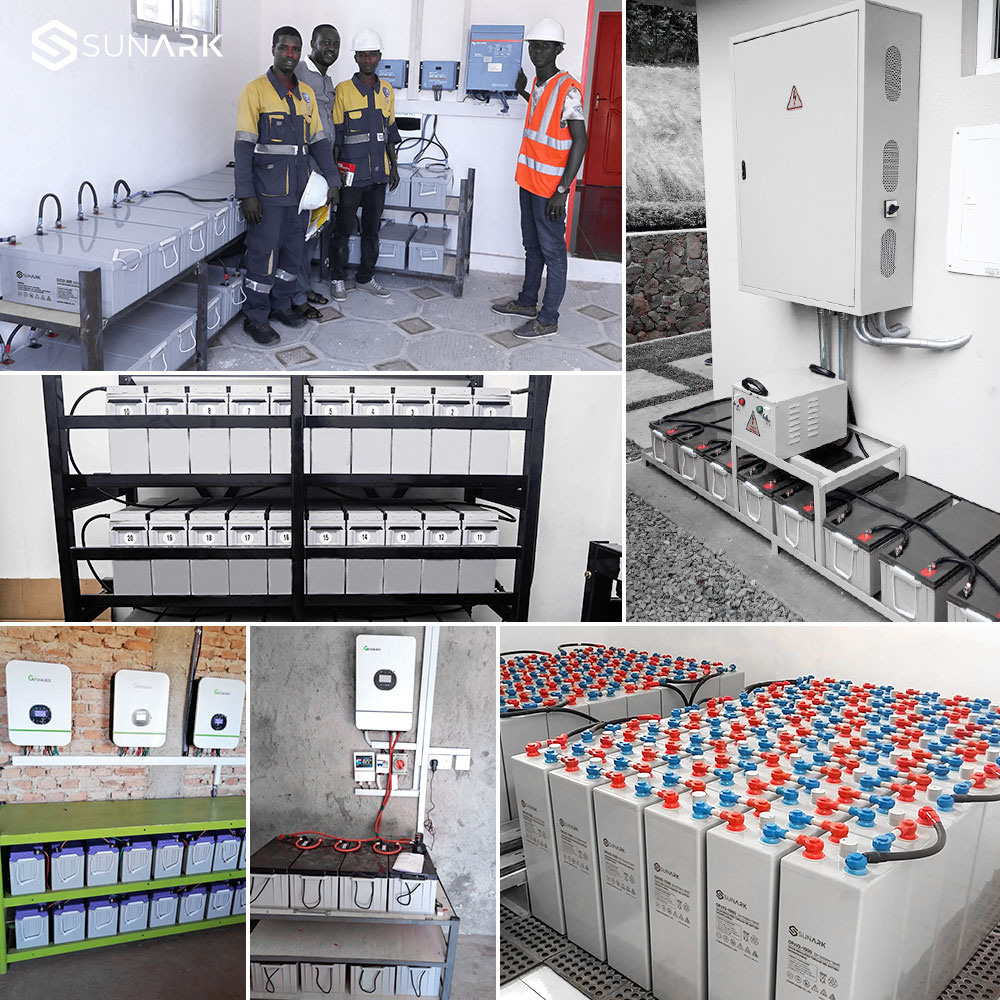Brand:
SunArkCells Per Unit:
1Voltage Per Unit:
2Design Life:
20 years (Float charging)Standby Use Voltage:
2.23V~2.25V @25°CCycle Use Voltage:
2.40V~2.45V @25°COperating Temperature Range:
Discharge: -15°C~50°C Charge: 0°C~40°C Storage: -15°C~50°CNormal Operating Temperature Range:
25°C ± 5°CSelf Discharge:
Monthly Self-discharge ratio is less than 3.5% at 25°C.Container Material:
A.B.S. UL94-HB UL94-V0 Optional
What is OPzV Battery
OPzV solid-state lead battery is also called: OPzV sealed tubular solid-state battery. OPzV is the German abbreviation: O-Ortsfest (solid state), Pz-PanZerplatte (tubular plate), V-Verschlossen (seal). The abbreviation OPzV comes from the German Sonnenschenin (German Sunshine). OPzV solid-state lead batteries can be widely used in user-side energy storage, power generation side and grid side peak regulation and frequency regulation. OPzV solid-state lead battery breaks through the one-time gel internalization process of nano-gel all-solid-state batteries, which not only ensures the solidification of the electrolyte inside the battery, but also ensures the safety performance of the battery. At the same time, it ensures that the internal pores of the plate are filled with nano-colloid solid electrolyte, which is more conducive to further improving the cycle life of the battery.

OPzV Battery Introduction:
OPzV solid-state lead battery has independent intellectual property rights. It uses gas-phase nano-silica gel as the electrolyte material, and the positive electrode adopts a tubular structure. It is suitable for safe energy storage and backup time of 10 minutes to 120 hours. OPzV solid-state lead battery is suitable for environments with large temperature differences, unstable power grids or renewable energy storage systems that are in a long-term power shortage state. OPzV solid-state lead batteries allow users to have more autonomy, allowing the battery to be installed on a cabinet or rack, or even next to office equipment, thereby improving space utilization and reducing installation and maintenance costs. Discharge characteristics: The temperature range during discharge should be within the range of -45°C to +65°C; the continuous discharge rate or current is suitable for 10 minutes to 120 hours, and there is no fire or explosion in a short circuit; the discharge termination voltage varies according to the discharge current or rate.

OPzV Charging Characteristics:
(1) During float charging, use a constant voltage of 2.25V/cell (set value at 20°C) or a current below 0.002C for continuous charging. When the temperature is below 5°C or above 35°C, the temperature compensation coefficient is: -3mV/cell/°C (based on 20°C).
(2) When equalizing charging, use a constant voltage of 2.30-2.35V/cell (set value at 20°C) for charging. When the temperature is below 5°C or above 35°C, the temperature compensation coefficient is: -4mV/cell/°C (based on 20°C).
(3) The initial charging current reaches up to 0.5C, the mid-term charging current reaches 0.15C, and the final charging current reaches 0.05C. The recommended best charging current is 0.25C.
(4) The charging capacity should be set to 100% to 105% of the discharging capacity, but when the ambient temperature is below 5°C, it should be set to 105% to 110%.
(5) The lower the temperature (below 5°C), the longer the charging time should be.
(6) Adopt intelligent charging mode to effectively control charging voltage, charging current and charging time.